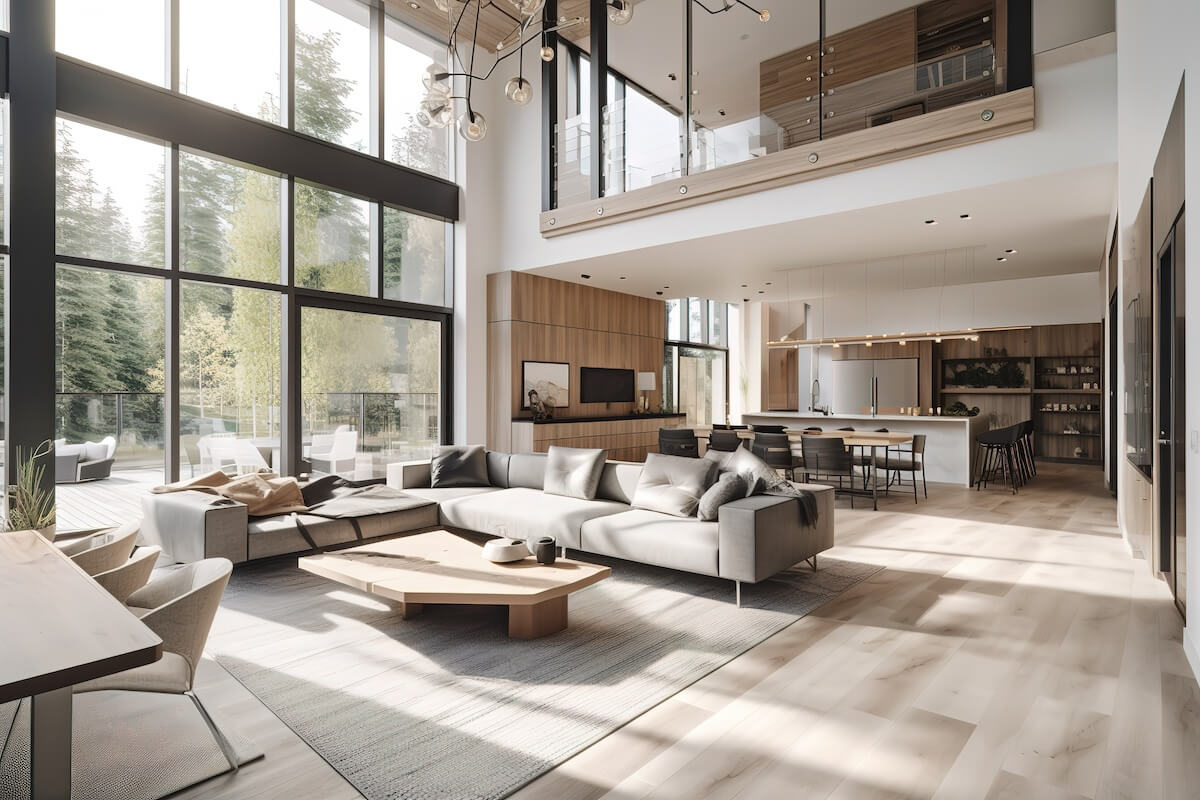All Categories
Featured

When developing a home, the design of furniture you choose plays a considerable role in establishing the general tone and ambience of a room. Two popular styles that homeowners typically question between are modern and traditional. While both designs have their special allure, they vary considerably in regards to layout, materials, and capability. Understanding the differences between these two designs will aid you select the ideal pieces for your home, whether you're redecorating an area or equipping a whole house.
- Design and Structure. Contemporary Furnishings: Contemporary furnishings is identified by smooth, minimalist styles that highlight simpleness and clean lines. Contemporary furniture has a tendency to be airy and light, preferring open spaces, and commonly stays clear of excessive decoration.
Standard Furnishings: Conventional furniture, by comparison, draws ideas from historical styles such as Colonial, Victorian, or French Provincial. The styles are typically extra complex, with rounded lines, ornate carvings, and decorative detailing. Traditional furnishings items often tend to have a more magnificent or official look, with stylish curves and larger building and construction. Unlike the sleekness of modern pieces, standard furnishings commemorates craftsmanship, frequently showcasing magnificently in-depth woodwork and extravagant upholstery. The aesthetic is rooted in a feeling of timelessness and refinement.
- Products and Finishes. Contemporary Furniture: Contemporary furnishings is made making use of a variety of materials, including metals, glass, acrylic, and wood. The materials used are commonly lighter and less sophisticated than those found in standard furnishings, yet they are made to emphasize open rooms and clean lines.
Conventional Furniture: Conventional furniture is recognized for its usage of top notch, solid materials, specifically woods like oak, cherry, walnut, and mahogany. The construction of standard furnishings items is usually much more heavy and durable, developed to last for generations.
- Color Scheme. Contemporary Furnishings: The color palette in modern furniture is usually extra suppressed and neutral. While these neutral tones are the main structure, contemporary furnishings commonly integrates vibrant accent colors to bring in character and vibrancy.
Typical Furniture: Conventional furnishings, on the various other hand, includes richer, much deeper shades. Conventional furnishings also often tends to consist of a lot more intricate patterns and structures, such as floral concepts, damask, and stripes.
- Convenience and Functionality. Contemporary Furniture: Comfort and performance are crucial parts of modern furnishings. Pieces are usually designed with ergonomic concepts in mind, ensuring comfort while preserving a clean, modern look. Numerous contemporary furnishings styles are modular, permitting for adaptability and flexibility in different space sizes and designs. The emphasis is on practicality, with numerous contemporary items including integrated storage space or multi-functional functions. This makes contemporary furnishings suitable for contemporary space that need both style and energy.
Conventional Furniture: While convenience is definitely a consideration in traditional furnishings, it takes a backseat to the style and appeal of the style. Conventional furniture is often much more significant and may appear larger, with deep paddings and luxurious furniture. The emphasis in typical styles is on offering a comfortable, comfortable environment, but functionality is generally not as prioritized as in contemporary styles. Standard furniture may additionally feature detailed information such as tufted furniture, scrollwork, and hand-carved legs, which enhance the aesthetic charm however may not constantly use the exact same level of practicality as modern styles.

- Assimilation with Various Other Designs. Contemporary Furnishings: Among the advantages of contemporary furniture is its versatility. Considering that contemporary style focuses on clean lines and easy shapes, it can conveniently blend with various other styles, including industrial, Scandinavian, and even some conventional elements. Contemporary furnishings functions well in open-plan areas, city houses, and homes with minimal decor. Its neutral colors and easy kinds enable it to integrate smoothly with a variety of other layout aspects, making it a flexible choice for those aiming to blend and match styles.
Traditional Furnishings: Conventional furnishings is much more suited to homes that welcome a timeless, classic design. While it can be matched with contemporary or modern pieces to produce a diverse aesthetic, typical furnishings frequently stands out on its very own.
- Durability and Eternity. Contemporary Furnishings: Contemporary furnishings often tends to evolve with the times, mirroring existing style fads and preferences. While the contemporary appeal of these pieces can last for numerous years, they might not have the same lasting power as standard furniture. As fads transform, modern furniture may end up being out-of-date, however this can also be an advantage for those who enjoy upgrading their home frequently to maintain up with design shifts.
Traditional Furniture: Traditional furniture, however, has a classic top quality that allows it to maintain its beauty for generations. Due to its classic layout and top quality materials, standard furnishings commonly becomes a lasting investment. It can endure for decades, also centuries, without shedding its value or charm. This makes traditional furnishings an outstanding choice for home owners searching for items that can stand the test of time and be passed down through the household.
Final thought. Ultimately, the choice in between contemporary and standard furniture styles depends on your individual choices and the ambience you want to produce in your home. In contrast, standard furnishings gives ageless style and elaborate workmanship, excellent for producing a lavish, timeless setting.
Latest Posts
What Are the Distinctions In Between Contemporary and Traditional Furniture Styles?
Published Jan 20, 25
0 min read
Exactly How Does the Store Manage Furnishings Delivery and Setting Up Services?
Published Jan 20, 25
0 min read
Tailoring Your Continuous Panel Fence: Options and Enhancements
Published Jan 20, 25
1 min read
More
Latest Posts
What Are the Distinctions In Between Contemporary and Traditional Furniture Styles?
Published Jan 20, 25
0 min read
Exactly How Does the Store Manage Furnishings Delivery and Setting Up Services?
Published Jan 20, 25
0 min read
Tailoring Your Continuous Panel Fence: Options and Enhancements
Published Jan 20, 25
1 min read